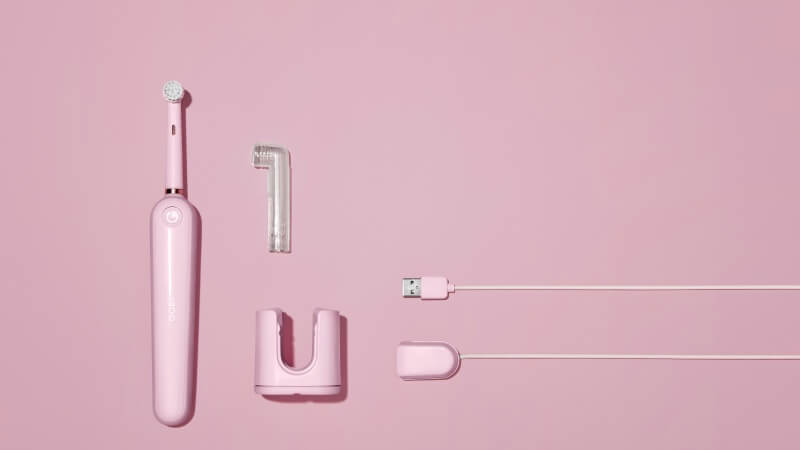
Tartar And Plaque:Remove Methods Without A Dentist
Tartar and plaque, known as dental calculus, form on teeth when plaque accumulates and starts to harden. Not only is tartar visually unappealing, but it

Knowing how often change toothbrush head is crucial, just like replacing a manual one. The electric brush may last, but its head won’t remain effective indefinitely, leading to inadequate cleaning and increased risk of plaque accumulation.
Electric toothbrush heads are designed with a variety of bristles, varying in length and angle, to ensure an efficient cleaning experience. Despite their durability and ability to endure multiple uses, their effectiveness has a limited lifespan.
To maintain oral hygiene, it’s advised to replace your electric toothbrush head every three months. A convenient feature of many electric toothbrushes is the inclusion of a color indicator on the brush head.
This indicator changes color to signal when it’s time for a replacement, providing a handy reminder even if you don’t mark it on your calendar.
Brushing more than twice daily, such as for those with braces needing to clear food debris, or brushing longer than 2 minutes might require you to replace your electric toothbrush head sooner than the standard 3 months.
Watch for these signs indicating it’s time for a new toothbrush head:
If you find yourself needing to replace the head more often, consider evaluating your brushing technique. Overly vigorous brushing can accelerate wear on both your toothbrush and your teeth’s enamel. Our dental team is available for advice if you suspect you’re brushing too harshly, offering guidance on the most effective and gentle brushing methods.
While wear and tear signs might not always be noticeable, there are several methods to ensure you remember to change your toothbrush heads on time.
Don’t just rely on your dentist’s advice; research confirms that new brush heads are more efficient in removing debris and plaque than worn ones. Therefore, regardless of your oral hygiene routine or brushing technique, an old toothbrush won’t provide the best care for your teeth and gums.
Knowing how often change toothbrush head is a key aspect of maintaining oral health. Regular replacement, as discussed, ensures the effectiveness of your electric toothbrush in combating plaque and maintaining dental hygiene.
To complement this routine, consider using a toothbrush sanitizer. These devices offer an extra level of cleanliness, eliminating germs and bacteria that might accumulate on your brush head, further protecting your oral health.
Remember, a clean and timely replaced toothbrush head, coupled with the use of a sanitizer, is a comprehensive approach to oral care.
FAQ 1: Is it necessary to use a toothbrush sanitizer for an electric toothbrush?
Answer: While not strictly necessary, using a toothbrush sanitizer can be beneficial. It helps eliminate bacteria and germs that may not be removed by rinsing alone, providing an extra layer of hygiene for your oral care routine.
FAQ 2: Can I use any brand of replacement heads for my electric toothbrush?
Answer: It’s best to use replacement heads specifically designed for your toothbrush model. Using incompatible heads can result in poor fitting, reduced effectiveness, and potential damage to your toothbrush.
FAQ 3: How do I dispose of my old electric toothbrush heads?
Answer: Old toothbrush heads should be disposed of according to your local recycling guidelines. Some brands offer recycling programs, so it’s worth checking with the manufacturer for environmentally friendly disposal options.
FAQ 4: Are there any signs that my electric toothbrush itself needs replacing?
Answer: Signs that your toothbrush needs replacing include decreased performance, a battery that doesn’t hold charge as well, or visible wear and tear. Regular maintenance can extend its lifespan, but most electric toothbrushes need replacing every 3-5 years.
FAQ 5: Can children use electric toothbrushes, and how often should their brush heads be changed?
Answer: Yes, children can use electric toothbrushes designed for their age group. Their brush heads should be changed as often as adults’, typically every three months, but possibly more frequently depending on wear and their brushing habits.


Tartar and plaque, known as dental calculus, form on teeth when plaque accumulates and starts to harden. Not only is tartar visually unappealing, but it

We are often contacted by customers complaining about a Sonicare toothbrush not charging. A charging issue is a common problem and can sometimes be misdiagnosed

Opting for an electric toothbrush for sensitive teeth can help alleviate discomfort and further protect against gum recession. But which model is ideal for those

Have you learned how to use an electric toothbrush? It’s crucial to know not just for electricity but for any toothbrush type. Even though electric

Tartar and plaque, known as dental calculus, form on teeth when plaque accumulates and starts to harden. Not only is tartar visually unappealing, but it

We are often contacted by customers complaining about a Sonicare toothbrush not charging. A charging issue is a common problem and can sometimes be misdiagnosed

Opting for an electric toothbrush for sensitive teeth can help alleviate discomfort and further protect against gum recession. But which model is ideal for those

Have you learned how to use an electric toothbrush? It’s crucial to know not just for electricity but for any toothbrush type. Even though electric
Copyright © 2025 toothbrushsanitizerholder. All Rights Reserved.